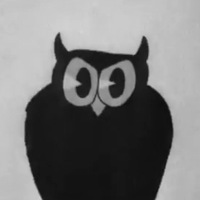
Вопрос задан 06.05.2019 в 22:06.
Предмет Английский язык.
Спрашивает Ognevoy Bogdan.
Поставить глагол to introduce во всех временах английского языка. Simple Progressive Perfect
Perfect Progressive Present Past Future 0
0
 0
0
Ответы на вопрос
 Внимание! Ответы на вопросы дают живые люди. Они могут содержать ошибочную информацию, заблуждения, а также ответы могут быть сгенерированы нейросетями. Будьте внимательны. Если вы уверены, что ответ неверный, нажмите кнопку "Пожаловаться" под ответом.
Внимание! Ответы на вопросы дают живые люди. Они могут содержать ошибочную информацию, заблуждения, а также ответы могут быть сгенерированы нейросетями. Будьте внимательны. Если вы уверены, что ответ неверный, нажмите кнопку "Пожаловаться" под ответом.

Отвечает Петрова Ульяна.
Present Simple - Introduce/Introduces
Present Progressive - am/is/are introducing
Present Perfect - have/has introduced
Present Perfect Progressive - have/has been introducing
Past Simple - introduced
Past Progressive - was/were introducing
Past Perfect - had introduced
Past Perfect Progressive - had been introducing
Future Simple - will introduce
Future Progressive - will be introducing
Future Perfect - will have introduced
Future Perfect Progressive - will have been introducing
Present Progressive - am/is/are introducing
Present Perfect - have/has introduced
Present Perfect Progressive - have/has been introducing
Past Simple - introduced
Past Progressive - was/were introducing
Past Perfect - had introduced
Past Perfect Progressive - had been introducing
Future Simple - will introduce
Future Progressive - will be introducing
Future Perfect - will have introduced
Future Perfect Progressive - will have been introducing
 0
0
 0
0

Отвечает нейросеть ChatGpt. Будьте внимательны, ответы нейросети могут содержать ошибочные или выдуманные данные.
Simple Present Tense:
The simple present tense is used to describe actions that are habitual, general truths, or facts. It is formed by using the base form of the verb.Example: I eat breakfast every morning.
Present Progressive Tense:
The present progressive tense is used to describe actions that are happening at the moment of speaking or ongoing actions. It is formed by using the present tense of the verb "to be" (am, is, are) + the present participle (-ing form) of the main verb.Example: I am eating dinner right now.
Present Perfect Tense:
The present perfect tense is used to describe actions that started in the past and have a connection to the present. It is formed by using the present tense of the verb "to have" (have, has) + the past participle of the main verb.Example: I have eaten sushi before.
Present Perfect Progressive Tense:
The present perfect progressive tense is used to describe actions that started in the past, have a connection to the present, and are ongoing. It is formed by using the present tense of the verb "to have" (have, has) + been + the present participle (-ing form) of the main verb.Example: I have been eating healthy food lately.
Simple Past Tense:
The simple past tense is used to describe actions that happened and were completed in the past. It is formed by using the past tense of the verb.Example: I ate lunch an hour ago.
Past Progressive Tense:
The past progressive tense is used to describe actions that were ongoing in the past. It is formed by using the past tense of the verb "to be" (was, were) + the present participle (-ing form) of the main verb.Example: I was eating dinner when the phone rang.
Past Perfect Tense:
The past perfect tense is used to describe actions that happened before another action in the past. It is formed by using the past tense of the verb "to have" (had) + the past participle of the main verb.Example: I had eaten breakfast before I went to work.
Past Perfect Progressive Tense:
The past perfect progressive tense is used to describe actions that were ongoing in the past before another action in the past. It is formed by using the past tense of the verb "to have" (had) + been + the present participle (-ing form) of the main verb.Example: I had been eating healthy food for a month before I noticed any changes.
Simple Future Tense:
The simple future tense is used to describe actions that will happen in the future. It is formed by using the modal verb "will" + the base form of the verb.Example: I will eat dinner later tonight.
Future Progressive Tense:
The future progressive tense is used to describe ongoing actions that will happen in the future. It is formed by using the modal verb "will" + be + the present participle (-ing form) of the main verb.Example: I will be eating dinner at 7 PM tomorrow.
Future Perfect Tense:
The future perfect tense is used to describe actions that will be completed before a specific time in the future. It is formed by using the modal verb "will" + have + the past participle of the main verb.Example: I will have eaten by the time you arrive.
Future Perfect Progressive Tense:
The future perfect progressive tense is used to describe ongoing actions that will be completed before a specific time in the future. It is formed by using the modal verb "will" + have been + the present participle (-ing form) of the main verb.Example: I will have been eating healthy food for a year by the time I reach my goal weight. Please note that the examples provided are for illustrative purposes and may not be taken directly from the search snippets.
 0
0
 0
0
Топ вопросов за вчера в категории Английский язык
Последние заданные вопросы в категории Английский язык
Предметы
-
Математика
-
Литература
-
Алгебра
-
Русский язык
-
Геометрия
-
Английский язык
-
Химия
-
Физика
-
Биология
-
Другие предметы
-
История
-
Обществознание
-
Окружающий мир
-
География
-
Українська мова
-
Информатика
-
Українська література
-
Қазақ тiлi
-
Экономика
-
Музыка
-
Право
-
Беларуская мова
-
Французский язык
-
Немецкий язык
-
МХК
-
ОБЖ
-
Психология
-
Физкультура и спорт
-
Астрономия
-
Кыргыз тили
-
Оʻzbek tili
















